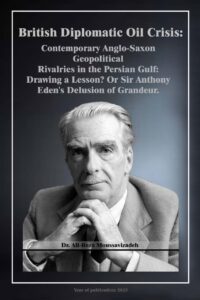The British Imperial Establishment, Post Imperial Era, and the ‘Churchillian’ World View, 1945-2016. (Adjustments & Challenges in Contemporary British Diplomatic Strategy)
29
by a number of
fiscal changes introduced by LLOYD GEORGE.”39 It is estimated
that between
six and eight million acres of land changed hands between 1918 and
1926, much of this land passing to smaller
owner-occupier farmers. Following
the pressures from manufacturers, and the successful compromise with
them
which we discussed earlier, the traditional landowners this time dealt with the
situation in which
they would otherwise be left with diminished estate by a
skillful management of the sale of their land which
ensured that their total wealth
would hardly be affected. Wealth released from the land in this way
was
reinvested in trade, industry or overseas property. These landowners became
active in the twentieth
century “in large industrial enterprises which increasingly
dominate the productive use of this land
even where they do not actually own the
land. Marketing and food-producing firms, together with fertiliser
and seed
suppliers, exercise a pervasive influence over the many owner-occupier and
tenant farmers.
Farming, like many small and medium sized businesses, is
becoming more and more dependent upon big business.
In this way land and
agriculture are integrated fully with the rest of the monopoly sector.”40
Until the
1930’s it was still possible in many cases, to find successors to
executive positions in companies from
within the large families who owned them.
After 1940 there was a smaller base of recruitment because of the
general
decrease in family size and the massive losses of men in two wars. Increasingly,
members of the
founding families were forced to appoint executives from outside
the family circle.
Family
holdings in the family company have gradually become more and
more diluted and family members have
diversified their investment portfolio, so
their particular interest in their company becomes less
all-pervasize in relation to
their other interests. The historic attachments of such families to their
base
companies become loosened and their broader interests in the wider corporate
system lead many such
entreprenurial capitalists to adopt a business style similar
Pages: 1 2 3 4 5 6 7 8 9 10 11 12 13 14 15 16 17 18 19 20 21 22 23 24 25 26 27 28 29 30 31 32 33 34 35 36 37 38 39 40 41 42 43 44 45 46 47 48 49 50 51 52 53 54 55 56 57 58 59 60 61 62 63 64 65 66 67 68 69 70 71 72 73 74 75 76 77 78 79 80 81 82 83 84 85 86 87 88 89 90 91 92 93 94 95 96 97 98 99 100 101 102 103 104 105 106 107 108 109 110 111 112 113 114 115 116 117 118 119 120 121 122 123 124 125 126 127 128 129 130 131 132 133 134 135 136 137 138 139 140 141 142 143 144 145 146 147 148 149 150 151 152 153 154 155 156 157 158 159 160 161 162 163 164 165 166 167 168 169 170 171 172 173 174 175 176 177 178 179 180 181 182 183 184 185 186 187 188 189 190 191 192 193 194 195 196 197 198 199 200 201 202 203 204 205 206 207 208 209 210 211 212 213

